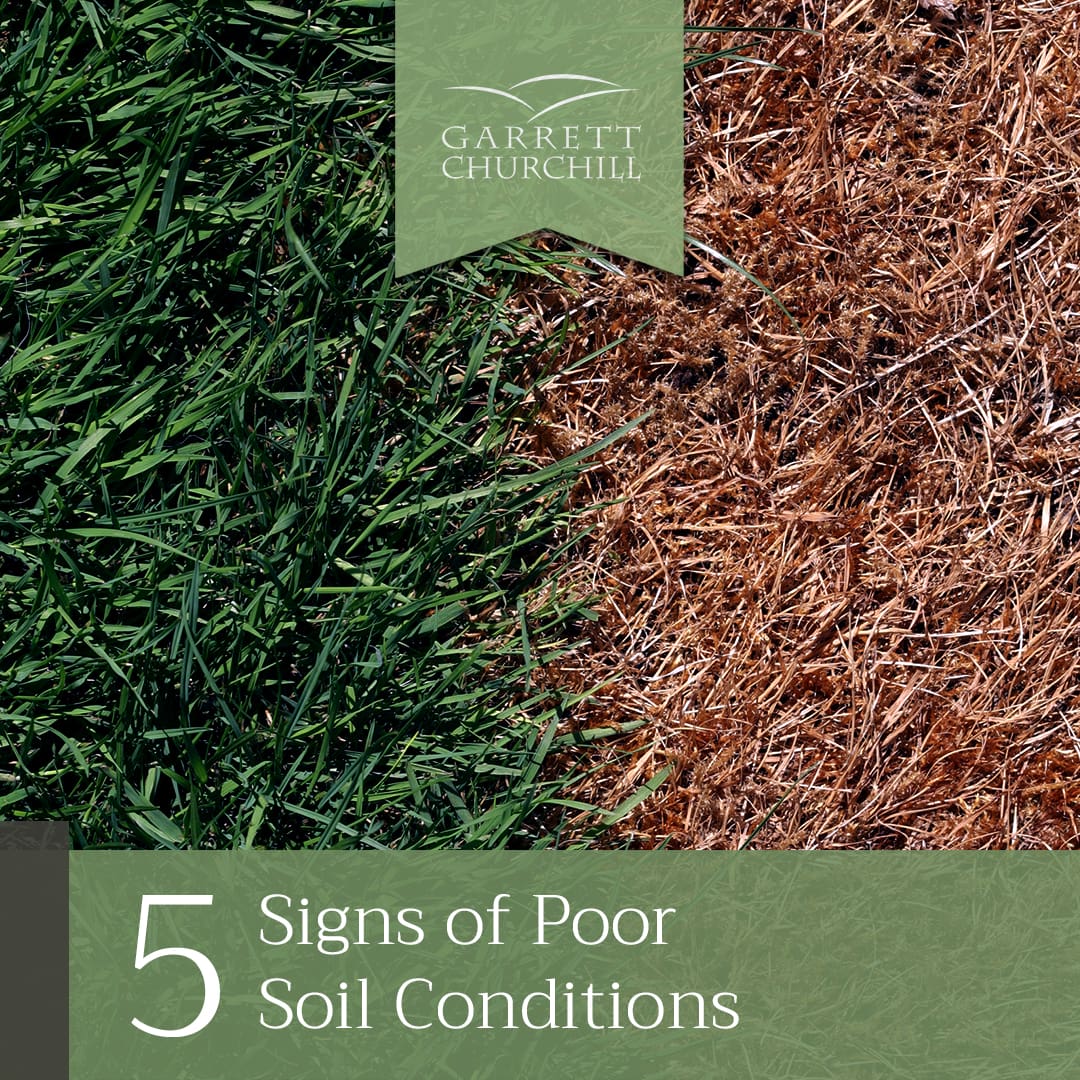5 Signs of Poor Soil Conditions
Whether you’re a first-time gardener, as seasonal hobbyist, or a diehard year-round gardener, the functionality and aesthetic appeal of your plants is highly dependent on the condition of your soil. In fact, all that time you spend planting seeds, watering your plants, and perfecting your softscape design practically goes to waste if you’re not building on a foundation of healthy, nutrient-rich soil.
Read on to learn about common signs of poor soil conditions, along with some tips for improvement.
Lack of Moisture
If your soil is dry and cracked, it’s probably not getting enough water and nutrients. A lack of sufficient water may cause the dryness, but that dryness can also continue to repel water. Dry, cracked soil can cause water to run off, preventing absorption.
Soils are composed of silt, clay, and sand, and the ideal soil is made up of a balanced combination of the three. Clay particles are the smallest and when compacted are very dense, creating areas of poor drainage.
Ideally, soil should be crumbly and moist, with different sized chunks that easily break apart in your hands. Improve the condition of your soil with proper watering and irrigation; organic matter such as compost can also boost your soil’s health by helping it to retain moisture and nutrients.
Difficulty Digging
If your soil is difficult to dig in and work with, you’re likely dealing with compacted soil. This hard, compressed soil makes it difficult for roots to grow properly—after all, if you have a hard time pushing a shovel into the ground, think about how much more difficult it will be for roots to grow properly in that environment. In most cases, compacted soil can be fixed with soil aeration or water infiltration.
Soil that is too high in clay content can also be difficult to work with. One way to determine how much clay is in the soil is to squeeze a handful of soil in your hand. If it stays clumped together and can even be rolled into a “snake” shape, it has too much clay for garden growth.
Poor Growth
Without healthy soil, plants are unable to thrive. If your plants are wilting, discolored, and not producing expected fruits and veggies, your soil may be the culprit.
For example: discolored, falling leaves could mean that your soil is low in nitrogen; foliage with no fruit, on the other hand, may be a sign of too much nitrogen.
Pull out a plant (start with an unwanted weed) to check the root development. Healthy roots should look like fine, white strands. Poor soil conditions can lead to stunted roots, brown and mushy roots, or even clubroot, all of which affect the overall growth of the plant.
Low Animal Life
A thriving ecosystem filled with diverse fungi, bacteria, insects, and invertebrates throughout the food chain is a sign of high-quality soil. Dig at least 6 inches into your soil and count the critters you find—you should see plenty of spiders, centipedes, beetles, and earthworms. These creatures are crucial when it comes to preventing unwanted pests and disease. Plus, earthworms help to prevent compaction by naturally aerating the soil.
If your soil is lacking in animal life, there’s a reason: it’s probably lacking the essential nutrients which make it livable.
Unwanted Plants
In addition to inhibiting healthy plant growth, poor soil conditions can also lead to unwanted growth.
For example: if your garden is growing moss, it means that your soil is too high in acidity; it also means that your garden needs more direct sunlight. If you have weeds such as creeping buttercup, chicory, coltsfoot, dandelion, plantain, and Canada thistle, your soil may be too high in clay content.
Similarly, unwanted growth can lead to poor soil conditions. If you notice unplanned plants sprouting in your soil, they may be the result of seeds carried and dropped by wind or birds. Those seeds could carry bacteria, fungus, or viruses that could lead to garden disease.
Additionally, check the rate of decomposition by digging about 6 inches into the soil. After about a year, fallen leaves or older plant residue should have broken down and disappeared. The faster the decomposition, the healthier the soil—if you’re able to see (or smell) those older plants, your soil probably isn’t properly aerated.
If you’re struggling with the condition of your soil, we offer on-site consultations plus soil analyses to maximize your soil health and functionality. Contact us today to learn more about our creative landscaping solutions with curb appeal.
